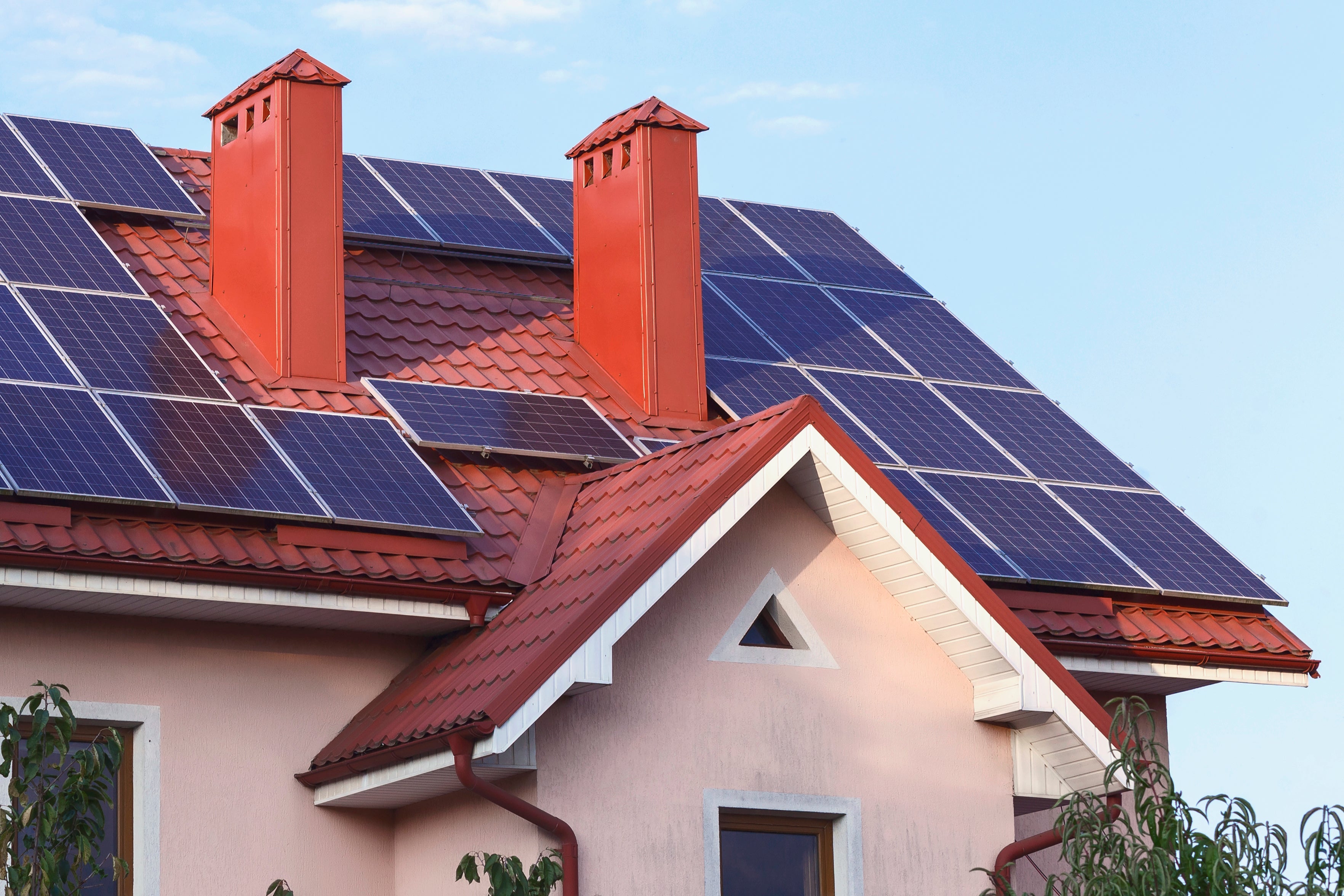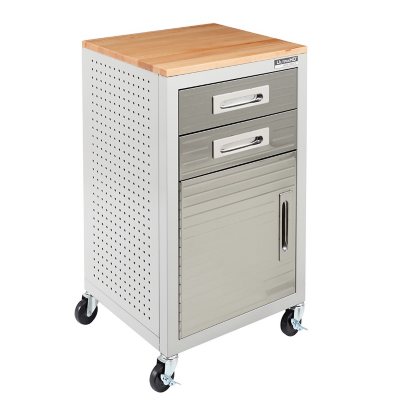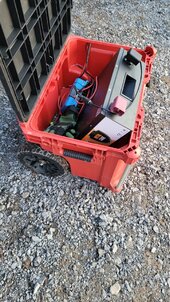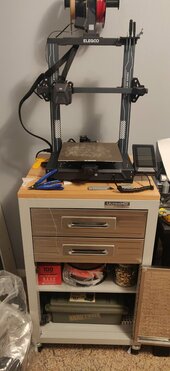You are using an out of date browser. It may not display this or other websites correctly.
You should upgrade or use an alternative browser.
You should upgrade or use an alternative browser.
Cheapest 48v 50ah battery I've found so far. $409.99 free shipping
- Thread starter cs1234
- Start date
Brucey
Solar Wizard
Easier to implement with the smaller 50Ah/50A BMS batteries as the amp requirements don't put you into the big bucks breaker category.I was also considering individual breakers for each battery, nice to have individual over current and disconnects.
bandgap
New Member
The little mnedc breakers I got were on sale for $18 at Stella Volta … seemed like a good deal for what I understand are higher quality breakers. Stock looks low though
Only ran the system for four hours but enough to know it basically works and I don’t have obvious defectives
By the way, I was checking out the instructions on eco worthy website and they mention the bms doesn’t balance until 3.6v and then only has 20ma of balancing. Seems almost useless. Does it make sense to try to occasionally float this at around 58v for some amount of time (how long?) to make sure things are balanced? Right now I can measure the cells individually but I’m sticking this in another metal box eventually and the bms has no communications.
My intended use is just as an occasional generator for home power. We typically have stable power but recently our power has been going out a handful of times per year with high winds, and I mostly want to keep my food from going bad. Does it even make sense to worry about balancing if I’m only partially cycling it a few times per year at average load of .1c?
Only ran the system for four hours but enough to know it basically works and I don’t have obvious defectives
By the way, I was checking out the instructions on eco worthy website and they mention the bms doesn’t balance until 3.6v and then only has 20ma of balancing. Seems almost useless. Does it make sense to try to occasionally float this at around 58v for some amount of time (how long?) to make sure things are balanced? Right now I can measure the cells individually but I’m sticking this in another metal box eventually and the bms has no communications.
My intended use is just as an occasional generator for home power. We typically have stable power but recently our power has been going out a handful of times per year with high winds, and I mostly want to keep my food from going bad. Does it even make sense to worry about balancing if I’m only partially cycling it a few times per year at average load of .1c?
Last edited:
Brucey
Solar Wizard
Yes the mnedcs have a great reputation. What size do you have going from the positive bus to the inverter? 100A?The little mnedc breakers I got were on sale for $18 at Stella Volta … seemed like a good deal for what I understand are higher quality breakers. Stock looks low though
Only ran the system for four hours but enough to know it basically works and I don’t have obvious defectives
By the way, I was checking out the instructions on eco worthy website and they mention the bms doesn’t balance until 3.6v and then only has 20ma of balancing. Seems almost useless. Does it make sense to try to occasionally float this at around 58v for some amount of time (how long?) to make sure things are balanced? Right now I can measure the cells individually but I’m sticking this in another metal box eventually and the bms has no communications.
My intended use is just as an occasional generator for home power. We typically have stable power but recently our power has been going out a handful of times per year with high winds, and I mostly want to keep my food from going bad. Does it even make sense to worry about balancing if I’m only partially cycling it a few times per year at average load of .1c?
I would just let the batteries be and use as normal. I just see if mine takes the full charge and carry on.

bandgap
New Member
Yes I did 100a for the main breaker… my inverter is supposed to max out at 75a anyway and 100a was the largest I could get for $18
This may be pushing the ampacity of 4awg a bit so I might lower it later not sure
This may be pushing the ampacity of 4awg a bit so I might lower it later not sure
I was looking for the BMS info you posted on the Ecoworthy website and did not see it, could youThe little mnedc breakers I got were on sale for $18 at Stella Volta … seemed like a good deal for what I understand are higher quality breakers. Stock looks low though
Only ran the system for four hours but enough to know it basically works and I don’t have obvious defectives
By the way, I was checking out the instructions on eco worthy website and they mention the bms doesn’t balance until 3.6v and then only has 20ma of balancing. Seems almost useless. Does it make sense to try to occasionally float this at around 58v for some amount of time (how long?) to make sure things are balanced? Right now I can measure the cells individually but I’m sticking this in another metal box eventually and the bms has no communications.
My intended use is just as an occasional generator for home power. We typically have stable power but recently our power has been going out a handful of times per year with high winds, and I mostly want to keep my food from going bad. Does it even make sense to worry about balancing if I’m only partially cycling it a few times per year at average load of .1c?
share with us where it is located?
I used one battery this weekend at our off grid cabin after charging it completely and was pretty impressed with its ability, ran everything but went into " battery under voltage alarm" in the morning while pulling 29 amps from it making a cup of coffee with the Keurig, that's our toughest load.
bandgap
New Member
I guess you have to take it with a grain of salt because it’s focused on 12v and in the French blog section of their website.. but there’s a little chart that seems to correspond with the little I could find about the jbd bms model:I was looking for the BMS info you posted on the Ecoworthy website and did not see it, could you
share with us where it is located?
I used one battery this weekend at our off grid cabin after charging it completely and was pretty impressed with its ability, ran everything but went into " battery under voltage alarm" in the morning while pulling 29 amps from it making a cup of coffee with the Keurig, that's our toughest load.

How to Properly Charge My Lithium Battery? Charging Guide of ECO-WORTH
Charging and discharging batteries is a chemical reaction, but it's claimed that Li-ion is an exception. Li-ion batteries are influenced by numerous features such as over-voltage, undervoltage, overcharge and discharge current, thermal runaway, and cell voltage imbalance. One of the most...
 fr.eco-worthy.com
fr.eco-worthy.com

Normal BMS16S 17S 20S 48V 72V 30A~50A Lithi Battery PCB - Jiabaida BMS
JBD Normal BMS 16S 17S 20S 48V 72V 30A 40A 50A Lithium Battery PCB. High quality better service and favorable price with Free shipping. Battery Management System for NMC/Li-ion Lifepo4 lithiuim battery
 jiabaidabms.com
jiabaidabms.com
bandgap
New Member
So I did a very rudimentary capacity test on one of my units. I don’t have any special equipment for a better job such as shunt, clamp meter, or 60v bench power supply.
I initially charged to 58.4 several times trying out different settings on the growatt/rs. It seems like I didn’t do a full charge since it only got to a resting voltage of 53.5v which I understand to be around 90% charge. Not sure if that’s an issue with my batteries or inverter or because I didn’t let it float for a long enough time.
I then ran my heat gun off the inverter. Inverter reported 620w and 13a draw… 13a is a rounded number it’s probably slightly less. From my observations that implies around 91% inverter efficiency.
It only ran for three hours before I hit 48v and it only ran a few more minutes before the inverter hit LVD. The BMS never disconnected I don’t think I got below 2.5v/cell
After a rest, pack voltage was back up above 48.
So what I can deduce from this is that about 40ah is 80-90% of the capacity. So capacity is around 45-50ah. Not really outstanding, but good enough I guess given my test capabilities. Not really worth buying a shunt at this point
I initially charged to 58.4 several times trying out different settings on the growatt/rs. It seems like I didn’t do a full charge since it only got to a resting voltage of 53.5v which I understand to be around 90% charge. Not sure if that’s an issue with my batteries or inverter or because I didn’t let it float for a long enough time.
I then ran my heat gun off the inverter. Inverter reported 620w and 13a draw… 13a is a rounded number it’s probably slightly less. From my observations that implies around 91% inverter efficiency.
It only ran for three hours before I hit 48v and it only ran a few more minutes before the inverter hit LVD. The BMS never disconnected I don’t think I got below 2.5v/cell
After a rest, pack voltage was back up above 48.
So what I can deduce from this is that about 40ah is 80-90% of the capacity. So capacity is around 45-50ah. Not really outstanding, but good enough I guess given my test capabilities. Not really worth buying a shunt at this point
Brucey
Solar Wizard
I'll be running mine down for a second cycle today will see what the charge it takes comes out to be.
Daddy Tanuki
Solar Wizard
its not blue... ignore it!I have negative infinity need for this, but I want to buy it. What is wrong with me?
Daddy Tanuki
Solar Wizard
I understand you're one of the resident safety / code experts on the site. It's helpful and appreciated for the knowledge alone, but.. people have different levels of scoff law'ing they are willing to engage in. We have a whole sub-forum here of people building their own batteries, some of them have nearly 50-100kw of custom built battery.. none of it to code. They are using better BMS's, but that hardly matters when the bomb disposal squad shows up.
I would at least put them in a metal shed in the back.
Yesh my precious 70kWh packs... keep Zany and the meany meany CS away from you we must!
Daddy Tanuki
Solar Wizard
quit swinging a stick at rocks trying to nock them into gopher holes and you can concentrate on a good bourbon... or Scotch if thats you flavor.Funny how the internet works,
I just want to get through 18 holes once a month without spending $1k every 2-3 years on lead acids.
bandgap
New Member
FWIW I charged the same pack back up to 58.4v at 10a limit and it took almost exactly 5 hours to hit that. So just over 50ah back in if my inverter is to be believed. Likely I didn’t have it fully charged before the first test, possibly an issue with parallelization. I don’t really want to run it all the way back down again I think I’ll just live with it being close enoughSo I did a very rudimentary capacity test on one of my units. I don’t have any special equipment for a better job such as shunt, clamp meter, or 60v bench power supply.
I initially charged to 58.4 several times trying out different settings on the growatt/rs. It seems like I didn’t do a full charge since it only got to a resting voltage of 53.5v which I understand to be around 90% charge. Not sure if that’s an issue with my batteries or inverter or because I didn’t let it float for a long enough time.
I then ran my heat gun off the inverter. Inverter reported 620w and 13a draw… 13a is a rounded number it’s probably slightly less. From my observations that implies around 91% inverter efficiency.
It only ran for three hours before I hit 48v and it only ran a few more minutes before the inverter hit LVD. The BMS never disconnected I don’t think I got below 2.5v/cell
After a rest, pack voltage was back up above 48.
So what I can deduce from this is that about 40ah is 80-90% of the capacity. So capacity is around 45-50ah. Not really outstanding, but good enough I guess given my test capabilities. Not really worth buying a shunt at this point
Brucey
Solar Wizard
bandgap
New Member
lol at first I thought you were gonna say it fits perfectly in the trash
I’m putting mine in this. It’s a bit of a tight fit I have to take at least one panel off to get it in (or play Tetris). Gonna need some fr4 or fish paper to guard against shorts

Seville Classics UltraHD 2-Drawer Rolling Storage Cabinet - Sam's Club
Buy Seville Classics UltraHD 2-Drawer Rolling Storage Cabinet : Garage Cabinets at SamsClub.com
Last edited:
Brucey
Solar Wizard
Nice! How many can you fit in it?lol at first I thought you were gonna say it fits perfectly in the trash
I’m putting mine in this. It’s a bit of a tight fit I have to take at least one panel off to get it in (or play Tetris). Gonna need some fr4 or fish paper to guard against shorts

Seville Classics UltraHD 2-Drawer Rolling Storage Cabinet - Sam's Club
Buy Seville Classics UltraHD 2-Drawer Rolling Storage Cabinet : Garage Cabinets at SamsClub.comwww.samsclub.com
bandgap
New Member
I can fit all three stacked in regular orientation (15 inches high, with shelf removed there’s a few inches clearance to the drawers. I guess I could remove the bottom drawer if I wanted another battery but I’d be pushing the stack ability structure and weight limits. Luckily this thing is pretty sturdy and it’ll be bottom heavy with the batteries. I looked at the harbor freight carts and they seemed like they would fall apart. Planning to mount the inverter to the sideNice! How many can you fit in it?
Last edited:
42OhmsPA
What's in a title?
Never would have thought to use that for batteries, great idea...
lol at first I thought you were gonna say it fits perfectly in the trash
I’m putting mine in this. It’s a bit of a tight fit I have to take at least one panel off to get it in (or play Tetris). Gonna need some fr4 or fish paper to guard against shorts

Seville Classics UltraHD 2-Drawer Rolling Storage Cabinet - Sam's Club
Buy Seville Classics UltraHD 2-Drawer Rolling Storage Cabinet : Garage Cabinets at SamsClub.comwww.samsclub.com
Attachments
bandgap
New Member
hmm... the dc house is $5 cheaper than the eco worthy$368 w/coupon on ebay again.
Similar threads
- Replies
- 86
- Views
- 3K
- Replies
- 9
- Views
- 471
- Replies
- 6
- Views
- 583
- Replies
- 20
- Views
- 1K
- Replies
- 1
- Views
- 192




